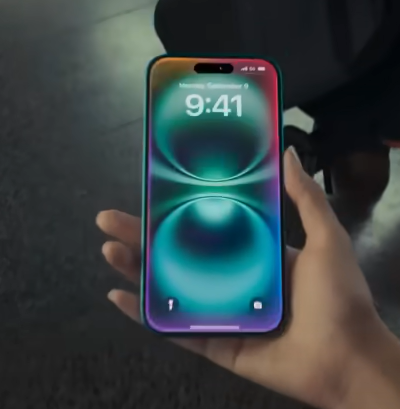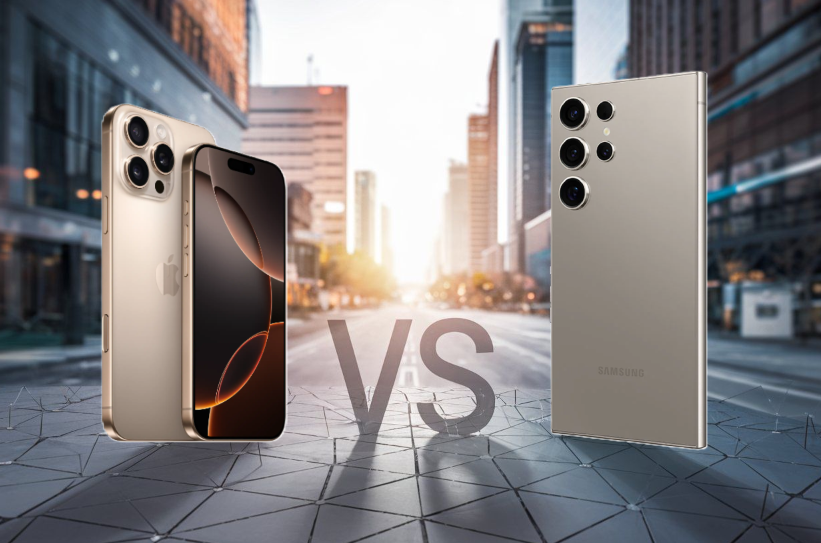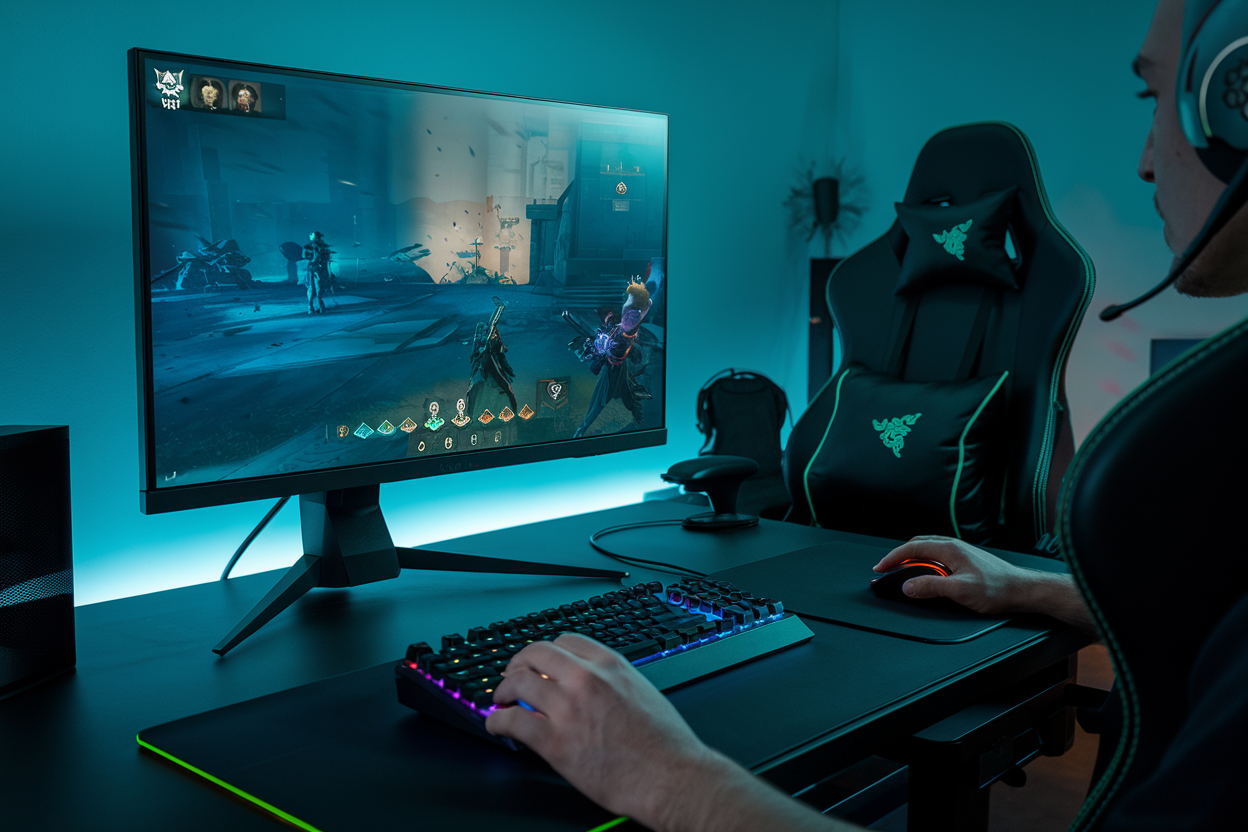Which Smartphone Offers The Best Overall User Experience?
The Samsung Galaxy S24 Ultra and iPhone 16 Pro Max have arrived, setting the stage for the biggest tech face-off of the year. Both are powerhouse flagship smartphones designed for those who want the ultimate in performance, features and design. But with two such strong contenders, the question is clear: Which is the real game-changer?
In 2024, the rivalry between Samsung and Apple is hotter than ever. Both companies continue to lead the smartphone market, innovating with each new release. Each device—Samsung’s Galaxy S24 Ultra and Apple’s iPhone 16 Pro Max—is packed with cutting-edge technology aimed at winning over tech enthusiasts worldwide. Samsung brings its expertise in Android and hardware features, while Apple provides its signature ecosystem and refined iOS experience.
Both the smartphones are garnering serious attention with their unique power and standout features. The Galaxy S24 Ultra leans towards innovation with Samsung’s signature S Pen, high-resolution camera and multi-tasking capabilities, while Apple’s iPhone 16 Pro Max impresses with its A18 Pro chip, ProRAW capabilities and seamless integration into Apple’s ecosystem.
In this head-to-head, we’ll discuss what makes each phone exceptional. We’ll look at the essentials: design, display, performance, camera capability, battery life and user experience. In the end, you’ll discover which flagship is a true game-changer in 2024 and which might best suit your needs. So, let’s find out whether Samsung Galaxy S24 Ultra or iPhone 16 Pro Max stands as the best smartphone of the year!
Design and Build Quality
The iPhone 16 Pro Max offers a refined, durable design with its lightweight titanium frame and Apple’s signature minimalist aesthetic, while the Samsung Galaxy S24 Ultra impresses with its traditional, slightly bulky build that feels tough and premium. Both phones are built to last with IP68 resistance, making them equally resilient in challenging conditions. However, the choice between them ultimately comes down to personal preference for a sleek, lightweight feel (iPhone 16 Pro Max) or a sturdy, classic grip (Galaxy S24 Ultra).
-
Aesthetics and design philosophy
iPhone 16 Pro Max: Apple went a step further with its titanium frame, shedding some weight while adding durability. Titanium gives iPhone 16 Pro Max a sleek, modern look with sharp edges and flat sides, a hallmark of Apple’s minimalist design language. This look is both bold and elegant, appealing to users who prefer a sophisticated, professional aesthetic.

Galaxy S24 Ultra: Samsung has kept its classic design with rounded edges and a slightly larger, bulkier feel. This design emphasizes sturdiness, providing a firm grip that feels secure in the hand. The Galaxy S24 Ultra features a metal frame with premium glass on the front and back, giving it a substantial, luxurious feel that users have come to expect from Samsung’s flagship models.
-
Material choice: Titanium vs metal frame
The iPhone 16 Pro Max’s titanium frame not only reduces the phone’s overall weight but also increases its scratch resistance, making it highly durable without adding bulk. Titanium is known for its superior strength-to-weight ratio, which is why Apple’s choice here offers users a lightweight yet sturdy phone, ideal for those who prioritize durability without compromising on style.
In contrast, the Samsung Galaxy S24 Ultra’s metal frame provides a solid, sturdy feel in the hand. Although slightly heavier than titanium, the combination of metal and glass gives the Galaxy S24 Ultra a premium heft that some users prefer for a more substantial feel.
-
IP68 resistance for durability
Both the iPhone 16 Pro Max and the Galaxy S24 Ultra are IP68-rated, ensuring they’re water- and dust-resistant. This rating means that both phones can withstand being submerged in 1.5m of water for 30 minutes without damage. Whether it’s exposed to rain or the occasional splash, both devices are built for day-to-day resilience, making them perfect for users who need a phone that can handle a variety of environments.
-
Weight and dimensions: ergonomics and usability
The iPhone 16 Pro Max, with its titanium frame, is noticeably lighter than previous models and even some competitors, which increases comfort for prolonged use. Apple’s emphasis on ergonomic design means that the iPhone 16 Pro Max is easy to hold for extended periods of time, making it ideal for users who often use their devices for reading, streaming or working on the go.
The Galaxy S24 Ultra, a bit heavy due to its metal and glass build, feels substantial and solid in the hand. Its dimensions are slightly larger than the iPhone 16 Pro Max, which appeals to users who prefer a larger device that’s still manageable. Samsung’s classic design with curved edges makes it easy to grip despite its size, offering a secure hold for users who prefer larger phones.
-
Fingerprint Sensor: Security and Convenience
Apple, which relies on Face ID for biometric security, Samsung opted for an in-display fingerprint sensor on the Galaxy S24 Ultra. This sensor provides a convenient, fast and secure way to unlock the device, especially in situations where Face ID may be less convenient. This feature may affect users who prefer the fingerprint unlock method, which Samsung has seamlessly implemented.
Final thoughts on design and build quality
In short, both the iPhone 16 Pro Max and the Galaxy S24 Ultra bring distinct strengths to their designs. The iPhone 16 Pro Max’s titanium frame makes it lightweight and resilient with a sleek, modern look, while the Galaxy S24 Ultra’s metal and glass build offers a more traditional, premium feel, with a focus on durability and form. Both devices offer IP68 resistance, so durability is well covered regardless of choice. The deciding factors will likely come down to ergonomic preferences, device feel and biometric security features.
Display Technology and Quality: Samsung S24 Ultra vs iPhone 16 Pro Max
Detailed Analysis of Display Technology and Quality
| Feature | Samsung Galaxy S24 Ultra | iPhone 16 Pro Max |
| Display Type | OLED Display | Super Retina XDR (OLED-based) |
| Size | 6.8 inches | 6.7 inches |
| Resolution | 3200 x 1440 pixels | 2796 x 1290 pixels |
| Pixel Density | ~500 PPI (pixels per inch) | ~460 PPI |
| Peak Brightness | 2,500 nits | 2,400 nits |
| Refresh Rate | 1-120Hz adaptive (Dynamic AMOLED 2X) | 1-120Hz ProMotion (variable refresh rate) |
Display type and size

- Samsung Galaxy S24 Ultra: The 6.8-inch OLED display is larger, offering a slightly wider view, ideal for those who want more screen real estate for activities like video streaming, gaming and multitasking. Samsung’s OLED technology offers deep blacks and vibrant colors, making the display look rich and dynamic.

- iPhone 16 Pro Max: Apple’s 6.7-inch Super Retina XDR display is also OLED-based, known for balanced color reproduction and high brightness. Although slightly smaller, it doesn’t sacrifice detail, making it comfortable for extended use while preserving Apple’s signature color accuracy and contrast.
Peak brightness
High peak brightness is essential for viewing content under varying lighting conditions, especially outdoors.
- Samsung Galaxy S24 Ultra: Samsung leads the way with a maximum brightness of up to 2,500 nits. This exceptionally high brightness enhances readability and makes it easy to watch videos or play games in direct sunlight. It is an ideal choice for users who frequently use their phones outdoors.
- iPhone 16 Pro Max: Apple’s display also impresses with a maximum brightness of 2,400 nits, which allows clear visibility even in bright light. A slightly lower peak brightness than the Samsung doesn’t compromise too much, as the Super Retina XDR’s display remains sharp and visible in a variety of settings.
Refresh rate
Both phones support variable refresh rates, enhancing the smoothness of animations, transitions and overall responsiveness.

- Samsung Galaxy S24 Ultra: Equipped with a dynamic 1-120Hz refresh rate, Samsung’s display can adjust its refresh rate based on activity. It delivers ultra-smooth speeds for fast-paced gaming while conserving battery when using less demanding apps.

- iPhone 16 Pro Max: Apple’s promotion technology also supports 1-120Hz variable refresh rate, intelligently adjusting to user needs. It’s optimized for efficiency and smoothness, providing fluid visuals for games, videos and general navigation.
Conclusion: User experience
The Samsung Galaxy S24 Ultra offers a more intense viewing experience with higher peak brightness and slightly higher pixel density, making it ideal for users who prioritize vibrancy and clarity, especially in outdoor or bright settings. On the other hand, the iPhone 16 Pro Max offers a beautifully balanced display with accurate color reproduction and optimized brightness, catering to users who appreciate color accuracy and seamless transitions.
Both phones come with state-of-the-art display technology and ultimately, the choice comes down to whether you prefer intense brightness and pixel density (Galaxy S24 Ultra) or color accuracy and balanced contrast (iPhone 16 Pro Max).
Camera Capabilities
When it comes to camera capabilities, both the Samsung Galaxy S24 Ultra and the iPhone 16 Pro Max come with top-of-the-line features designed to impress photography enthusiasts and casual users alike. The Galaxy S24 Ultra stands out with advanced camera control options and zoom capabilities, while the iPhone 16 Pro Max is celebrated for its ProRes and ProRAW options, making it the choice for video makers and photographers for finer control over their work. Each device has its strengths, but the best choice depends on whether you prefer custom camera controls (Samsung) or refined image quality and cinematic video capabilities (Apple).

- Samsung Galaxy S24 Ultra: Ideal for users who want control over camera settings, with high customization, 10x optical zoom, and 8K video options—perfect for capturing distant subjects in high detail.

- iPhone 16 Pro Max: Effortless pro-level images with ProRAW for deep photo editing and ProRes video for cinematic quality, ideal for those who edit in post-production.

Both the Galaxy S24 Ultra and the iPhone 16 Pro Max are equipped with advanced camera capabilities, catering to a wide variety of users. The S24 Ultra is perfect for those who appreciate customizable controls, high zoom and 8K video options, while the iPhone 16 Pro Max shines in its simplicity and post-processing options, making it ideal for professionals and creatives looking to edit their content. Whether you’re a photography enthusiast or a videography pro, one of these devices will likely meet your creative needs.
Performance and Processor Power – A Clash of Titans
When it comes to performance, the iPhone 16 Pro Max equipped with the A18 Pro chip and the Samsung Galaxy S24 Ultra powered by the Snapdragon 8 Gen 3 are two of the strongest contenders in the smartphone market. Both devices offer exceptional processing power, but they deliver slightly different user experiences The A18 Pro excels in efficiency and app optimization, making it a great choice for users focused on battery life and seamless multitasking. In contrast, the Snapdragon 8 Gen 3 offers brighter, higher frame rates and faster load times in gaming situations, which may appeal to gamers and heavy app users.
-
Processor overview
Apple’s A18 Pro chip is designed to optimize iOS capabilities for performance and power efficiency. With a focus on multi-core performance and machine learning, it ensures that apps run smoothly and efficiently. On the other hand, Qualcomm’s Snapdragon 8 Gen 3 is known for its strong performance in Android devices, offering advanced graphics and faster processing speeds made for gaming and intensive applications.
-
Benchmark scores
When comparing performance, benchmark scores can provide valuable insight. Here’s a summary of Geekbench scores for both processors:

- The A18 Pro chip typically leads in single-core performance, which is crucial for everyday tasks and app responsiveness.

- Snapdragon 8 Gen 3 offers solid multi-core performance, making it an excellent choice for multitasking and running multiple applications simultaneously.
3. App loading time
Both processors excel at app loading times, but real-world usage can reveal subtleties:
- iPhone 16 Pro Max: Thanks to iOS optimization, apps tend to open faster and run smoother. Users often report switching between apps quickly, thanks to the A18 Pro’s efficient memory management.
- Galaxy S24 Ultra: The Snapdragon 8 Gen 3 also performs admirably when it comes to app loading, but can lag a bit in some situations. However, it provides a more flexible and customizable user experience.
4. Gaming Performance
For gaming enthusiasts, both flagships offer exceptional experiences:
- Apple A18 Pro: The integrated graphics unit in the A18 Pro delivers stunning visuals and a smooth frame rate, especially for games optimized for iOS. Titles like “Genshin Impact” and “Call of Duty: Mobile” run seamlessly.

- Snapdragon 8 Gen 3: This processor is designed with gamers in mind, offering enhanced graphics capabilities and higher frame rates. The inclusion of features like Adreno GPU ensures that demanding games run at peak performance even at high settings.

5. Energy efficiency
Efficiency is an important factor for any flagship device, especially for those who prioritize battery life:
- A18 Pro Chip: Apple has always focused on making energy-efficient processors. The A18 Pro is built on a 3nm process technology, which significantly increases power efficiency. This means users can enjoy extended battery life, even during heavy usage.
- Snapdragon 8 Gen 3: While Snapdragon also focuses on energy efficiency, it is built on a 4nm process. Users may notice slightly lower battery life under heavy gaming or multitasking than the iPhone, especially if the device is not properly optimized.
Final thought
In short, both the iPhone 16 Pro Max with its A18 Pro chip and the Samsung Galaxy S24 Ultra with Snapdragon 8 Gen 3 offer strong performance and power efficiency. The iPhone tends to excel at single-core tasks and overall optimization, making it a great choice for everyday use and multitasking. In contrast, the Galaxy S24 Ultra delivers bright, excellent graphics and high frame rates in gaming situations. Ultimately, your choice will depend on whether you prioritize efficiency and smooth multitasking or gaming performance.
Battery Life and Charging Speed
When choosing between Samsung Galaxy S24 Ultra and iPhone 16 Pro Max, battery life and charging speed are important factors that significantly affect the overall user experience. Both devices offer impressive battery capacity and advanced charging capabilities, but they cater to different user needs and preferences. Finally, the iPhone 16 Pro Max excels in battery longevity and power efficiency, while the Samsung Galaxy S24 Ultra excels in charging speed and versatility for power users.

Battery capacity
A smartphone’s battery capacity is a key determinant of its longevity. The Samsung Galaxy S24 Ultra packs a 5,000 mAh battery, while the iPhone 16 Pro Max has a slightly smaller 4,422 mAh battery. Despite the iPhone’s low power, Apple’s efficient hardware-software integration allows for impressive battery performance.
For general use cases
- Samsung Galaxy S24 Ultra: Under normal usage, which includes browsing, video streaming and using social media, the S24 Ultra can last a full day with moderate use. For power users engaged in gaming or video editing, the battery can drain quickly, especially with high-brightness settings or when using features like Samsung DeX.
- iPhone 16 Pro Max: The iPhone 16 Pro Max, despite its small battery, is known for its great power efficiency. Users can expect more than a day of use with regular tasks like texting, browsing and video streaming. The iPhone also features adaptive battery technology that optimizes performance based on user habits, extending its life even more during light use.
Charging speed
Charging speed is equally important for users who are always on the move. Here’s how both devices work:
- Samsung Galaxy S24 Ultra: With its 45W wired charging, the Galaxy S24 Ultra can reach about 50% charge in about 30 minutes. This fast charging capability makes it ideal for users who need a quick power boost. Additionally, it supports reverse wireless charging, allowing users to charge accessories like earbuds directly from the phone.
- iPhone 16 Pro Max: Although the iPhone offers a lower 20W wired charging speed, it has been optimized for user convenience. The MagSafe feature allows easy alignment with charging accessories, ensuring efficient wireless charging. However, users will find that it takes a bit longer to reach full charge than the S24 Ultra.
Advanced battery technology
Both devices incorporate advanced battery technology to improve performance:
- Samsung Galaxy S24 Ultra: This device uses Power Efficiency Mode that adjusts background activity and screen brightness to save battery life. Integration of AI helps predict usage patterns, optimizing power consumption when needed.
- iPhone 16 Pro Max: Apple’s focus on iOS optimization enables features like Low Power Mode, which conserves battery by reducing background activity and visual effects. The iPhone also includes features that reduce battery degradation over time, extending overall battery life.
Summary
In summary, both the Samsung Galaxy S24 Ultra and the iPhone 16 Pro Max have strong battery life and charging speeds. If you prioritize long battery life and power efficiency, the iPhone 16 Pro Max stands out with its advanced optimizations. Conversely, if fast charging and high capacity are more important to you, the Samsung Galaxy S24 Ultra is the clear winner. Consider your usage patterns and preferences to determine which flagship aligns better with your lifestyle
Software and User Experience: iOS vs Android
Conclusion: When choosing between Samsung Galaxy S24 Ultra and iPhone 16 Pro Max, software and user experience play an important role. While both devices offer robust platforms, their ecosystems are significantly different, affecting how users interact with their smartphones on a daily basis.
Software ecosystem
iOS: iPhone 16 Pro Max runs on Apple’s iOS, known for its smooth user interface and intuitive design. Apple prioritizes regular OS upgrades, ensuring users have access to the latest features and security updates. This commitment to updates extends the longevity of iPhones, making them a reliable choice for those who prefer a consistent experience.
Android: In contrast, the Galaxy S24 Ultra runs on Samsung’s customized version of Android While Android offers more customization options, Samsung often adds its own features, which can sometimes lead to a less uniform experience than iOS. However, Samsung is also good at providing software updates, especially for its flagship devices.
Easy to use
User Experience: Both operating systems aim to enhance the user experience, but they do so in different ways. iOS is often praised for its simplicity and ease of use, making it ideal for users who want a straightforward, hassle-free experience. Android, on the other hand, allows for greater flexibility and customization, catering to tech-savvy users who enjoy tweaking their devices.
unique features
Multi-App Split Screen: A standout feature of the Samsung Galaxy S24 Ultra is the multi-app split screen, which enables users to run two apps simultaneously. This is especially useful for multitasking, allowing users to browse the web while chatting with friends or taking notes.

Samsung DeX: Additionally, Samsung DeX provides a unique experience by transforming the smartphone into a desktop-like environment when connected to a monitor. This feature appeals to professionals who need a more expansive workspace on the go.
Apple’s Ecosystem: Conversely, Apple’s strength lies in the seamless integration of its ecosystem. Features like Handoff and AirDrop enable effortless transitions between devices, moving from iPhone to MacBook or quickly sharing files with other Apple users. This consistency increases productivity and provides a cohesive user experience.
In short, the choice between iOS and Android often comes down to personal preference. The iPhone 16 Pro Max offers a polished and consistent experience, while the Galaxy S24 Ultra offers flexibility and innovative features like multi-app split screen and Samsung DeX. Depending on your needs, both platforms can provide a compelling user experience.
Which device is a real game-changer?
In the competitive landscape of flagship smartphones, the Samsung Galaxy S24 Ultra and iPhone 16 Pro Max stand out not only for their impressive specs, but also for their price structure. Understanding the price comparison between these two devices is important for tech lovers to get the best value for their money. Ultimately, choosing the right flagship depends on evaluating performance, special features and potential trade-offs.
Price Breakdown
When considering the price of a flagship device, it is important to look at the base price along with various storage options and any additional costs associated with mobile accessories.

Both the Galaxy S24 Ultra and the iPhone 16 Pro Max share the same starting price, but their value propositions are significantly different. For example, the Galaxy S24 Ultra comes with the S Pen, which is not only a useful tool for productivity but also adds to the overall functionality of the device. On the other hand, Apple offers a seamless integration of AI features that enhance the user experience, especially with photography and smart assistance.
Storage options and costs
Both smartphones offer multiple storage configurations, which can significantly affect the final price. If you plan to store a lot of media, you can consider the 512GB or even 1TB variants. Here’s how they stack up
Galaxy S24 Ultra:
- 256GB: $1,199
- 512GB: $1,379
- 1TB: $1,599
- 256GB: $1,199
- 512GB: $1,399
- 1TB: $1,599
As you can see, both the flagship phones maintain the same price for the base model, but the differences start to show in the higher storage options. The Galaxy S24 Ultra tends to be a bit more affordable for the 512GB variant than the iPhone.
Evaluate deals and special features:
When buying a flagship smartphone, it is wise to explore any available deals that can make these devices more financially attractive. Both Samsung and Apple often run promotions that can help offset costs:
Samsung: Many carriers offer trade-in options, allowing users to reduce their upfront costs when switching to the Galaxy S24 Ultra. Additionally, Samsung often offers mobile accessories at discounted rates or bundled with device purchases.
Apple: The Apple trade-in program is designed to give users credit toward their new device when they trade in their old phone. This could significantly reduce the price of the iPhone 16 Pro Max. Also, Apple’s ecosystem often encourages users to invest in additional accessories, such as MagSafe chargers, that can enhance the user experience.
Conclusion: Best value for money
In the end, deciding which device offers the best value for money comes down to personal preference and needs. If you are someone who values the productivity features that come with the S Pen and multitasking capabilities, then the Samsung Galaxy S24 Ultra might be a better choice. The integration of special features like advanced camera modes and generative AI also appeals to tech enthusiasts who enjoy innovative technology.
Conversely, if you prioritize an integrated ecosystem and exceptional software support, the iPhone 16 Pro Max may be worth the investment. Apple’s focus on user experience and its constant updates to mobile software can significantly improve long-term usability.
Ultimately, both smartphones represent the pinnacle of mobile technology, and your choice will likely reflect your specific needs and values in a smartphone.


























